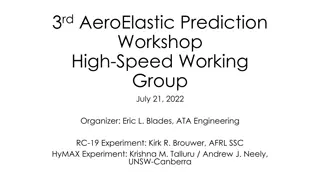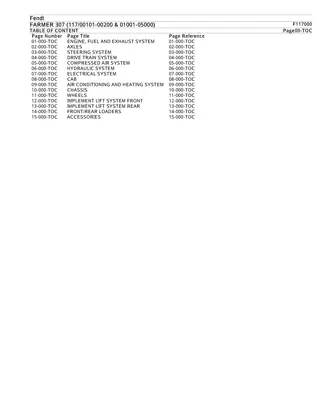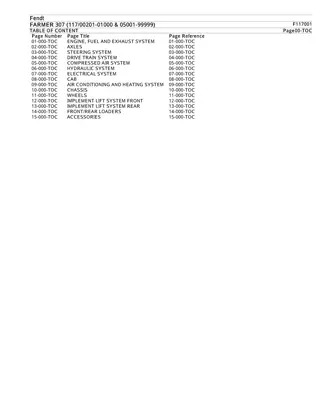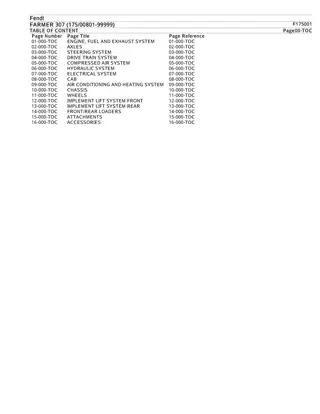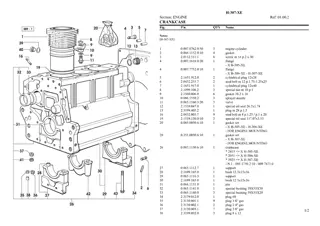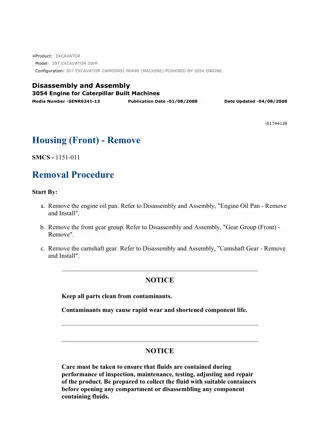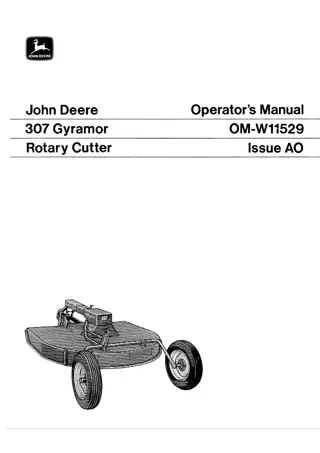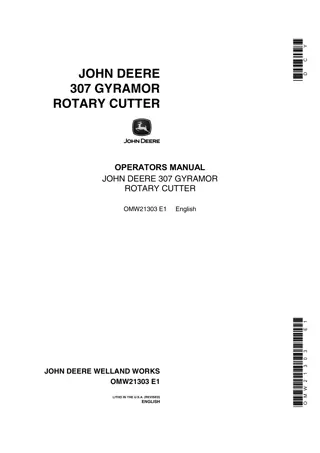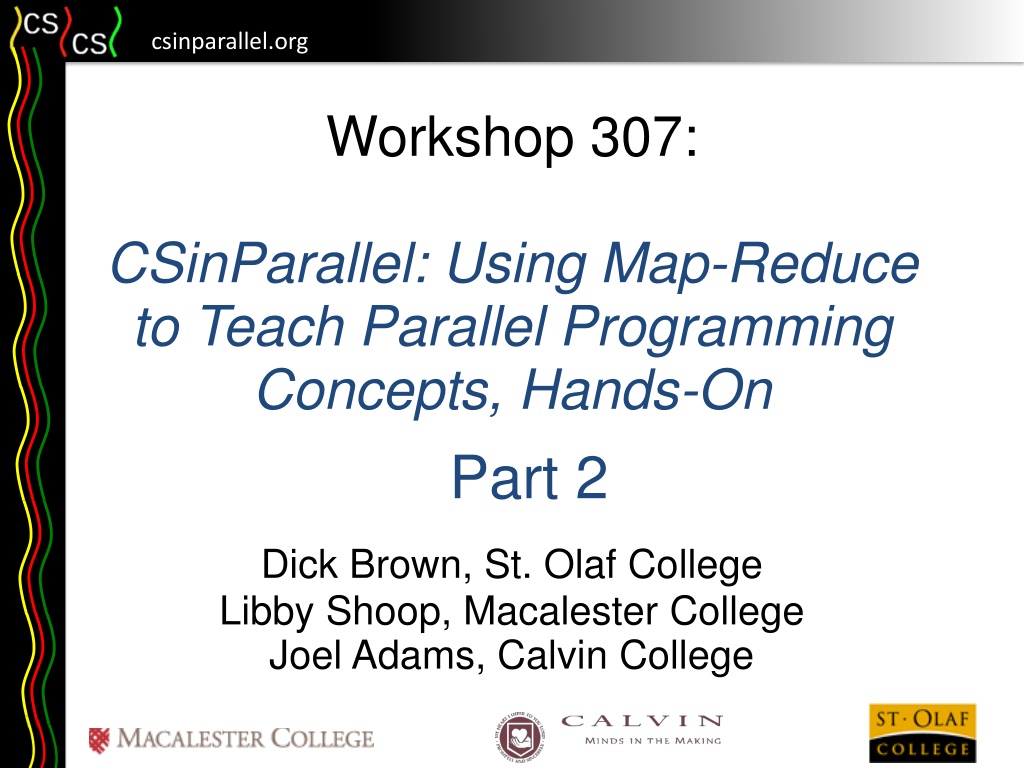
Teaching Parallel Programming with Map-Reduce: Hands-On Workshop Insights
Delve into the world of parallel programming with an insightful workshop on using Map-Reduce to teach foundational and advanced concepts. Explore WebMapReduce (WMR) and its architecture, learn about advanced courses, and discover text processing techniques. Enhance your understanding of structured values, multi-case mappers, reducers, and combining data within a mapper. Uncover the art of inverting text for enhanced data analysis.
Download Presentation

Please find below an Image/Link to download the presentation.
The content on the website is provided AS IS for your information and personal use only. It may not be sold, licensed, or shared on other websites without obtaining consent from the author. Download presentation by click this link. If you encounter any issues during the download, it is possible that the publisher has removed the file from their server.
E N D
Presentation Transcript
csinparallel.org Workshop 307: CSinParallel: Using Map-Reduce to Teach Parallel Programming Concepts, Hands-On Part 2 Dick Brown, St. Olaf College Libby Shoop, Macalester College Joel Adams, Calvin College
csinparallel.org Goals Introduce map-reduce computing, using the WebMapReduce (WMR) simplified interface to Hadoop Why use map-reduce in the curriculum? Hands-on exercises with WMR for foundation courses Use of WMR for intermediate and advanced courses What s under the hood with WMR A peek at Hadoop Hands-on exercises for more advanced use
csinparallel.org About WMR WMR and its architecture User Browser Cluster Cluster Head Node Web Server User Browser Obtaining and installing WMR WebMapReduce.sf.com
csinparallel.org WMR in advanced courses
csinparallel.org CS1 materials, but faster CS1 module Map-reduce programming techniques Features of WMR Context forwarding Structured values; structured keys Multi-case mappers; multi-case reducers Broadcasting data values
csinparallel.org Text Processing Techniques Combining data within a mapper Mapper: Tally counts of words before sending to reducer Computational linguistics: words that are co-located Find and count pairs Example In: the cat in the cat hat Emits: 1 cat|in 1 in|the 1 cat|hat 2 the|cat Use combining procedure to find stripes Example In: the cat and the dog fought over the dog bone Emits: (the, {cat:1, dog:2} Thanks to: Data Intensive Text Processing, by Jimmy Lin and Chris Dyer
csinparallel.org Inverting "Chapter 1: Call me Ishmael. Some "Chapter 2: I stuffed a shirt or two ..." "Chapter 3: Entering that gable-ended ... --> [mapper] ("call", "1"), ("me", "1"), ..., ("i", "2"), ("stuffed , "2"), ..., ("entering", "3"), ... --> [reducer] "a" "1,1,1,1,...,2,2,2,..." "aback" "3,7,7,8,... ...
csinparallel.org When is map-reduce appropriate? Massive, unstructured or irregularly structured big data (Terascale and upward) Raw text Web pages XML Unstructured streams of data Other approaches may fit structured big data Scalable databases Large-scale statistical approaches
csinparallel.org Using Hadoop directly Java
csinparallel.org Basic Hadoop components Internals: Job management (per cluster) Task management (per computation node) Some components visible to the user: Hadoop API Java, or arbitrary executables ( Streaming ) Hadoop Distributed File System (HDFS) Support tools, including hadoop command Limited job monitoring
csinparallel.org Direct Hadoop Examples Word count Java
csinparallel.org Quick questions/comments so far?
csinparallel.org Hands-on
csinparallel.org Overview of suggested exercises Computations with MovieLens2 data; multiple map-reduce cycles Traffic data analysis Network analysis using Flixter data The Million Song dataset
csinparallel.org Discussion
csinparallel.org Evaluations! Links at: CSinParallel.org -> Workshops -> WMR Workshop (end of the page)
csinparallel.org Some considerations with Hadoop Numbers of mappers and reducers DFS Fault tolerance I/O formats Note: we have further slides with additional information about these aspects, for you to look at on your own.
csinparallel.org Additional Details about Hadoop
csinparallel.org The hadoop project documentation http://hadoop.apache.org/common/docs/cu rrent/index.html
csinparallel.org How many mappers? The Hadoop Map/Reduce framework spawns one mapper task for each InputSplit generated by the InputFormat for the job. The number of mappers is usually driven by the total size of the inputs, that is, the total number of blocks of the input files.
csinparallel.org How many reducers? The number of reducers for the job is set by the user via JobConf.setNumReduceTasks(int) The size of your eventual output may dictate how many reducers you choose.
csinparallel.org HDFS Fault-tolerant distributed file system modeled after the Google File System we've had students read the original GFS paper in an advanced course http://hadoop.apache.org/hdfs/docs/current/in dex.html Note the section about the file system commands you can run from the command line: hadoop fs -ls Hadoop fs -get or -put
csinparallel.org HDFS Assumptions and Goals Hardware failure Hardware failure is the norm rather than the exception. Streaming data access Applications that run on HDFS need streaming access to their data sets. They are not general purpose applications that typically run on general purpose file systems. Large Data Sets Simple coherency model Read many, write once Moving computations is simpler than moving data Portability across various hardware/software
csinparallel.org Input/Output formats Input into mappers are interpreted using classes implementing the interface InputFormat, and out put from reducers are implemented using classes implementing the interface OutputFormat. In WMR, the mapper input and reducer output is performed with key-value pairs. This corresponds to using the classes KeyValueTextInputFormat and TextOutputFormat. In direct Hadoop, the default input format is TextInputFormat, in which values are lines of the file and keys are positions within that file.
csinparallel.org Some further features of Hadoop Combiner, an optimization: perform some "reduction" during the map phase, after mapper() and before shuffle Sorting control Note: hard to sort on secondary key Three programming interfaces: Java; pipes (C++); streaming (executables)
csinparallel.org Page rank algorithm ideas Original data: one web page per line mapper produces ("dest", "1/k Pn") for each link in page Pn where k links appear within that page Pn reducer produces ("dest", "weight_0 P1 P2 P2 P3 P4 ...") where weight is sum of the weights from key value pairs emitted by P1, P2, ... Subsequent mappers and reducers produce refined weights that take into account deeper chains of pages pointing to pages Final reducer delivers ("dest", "weight_k") [drop Pns]

